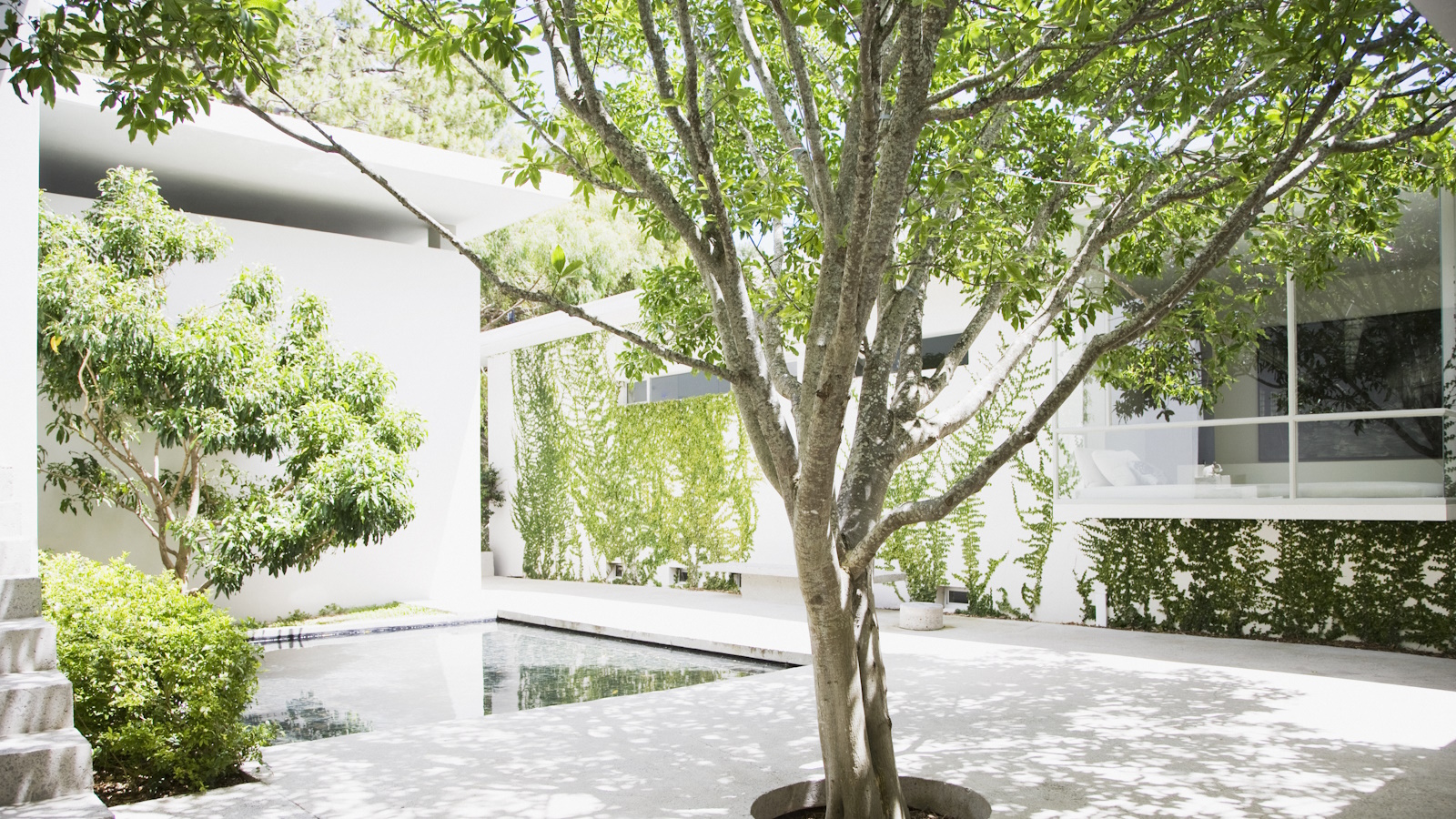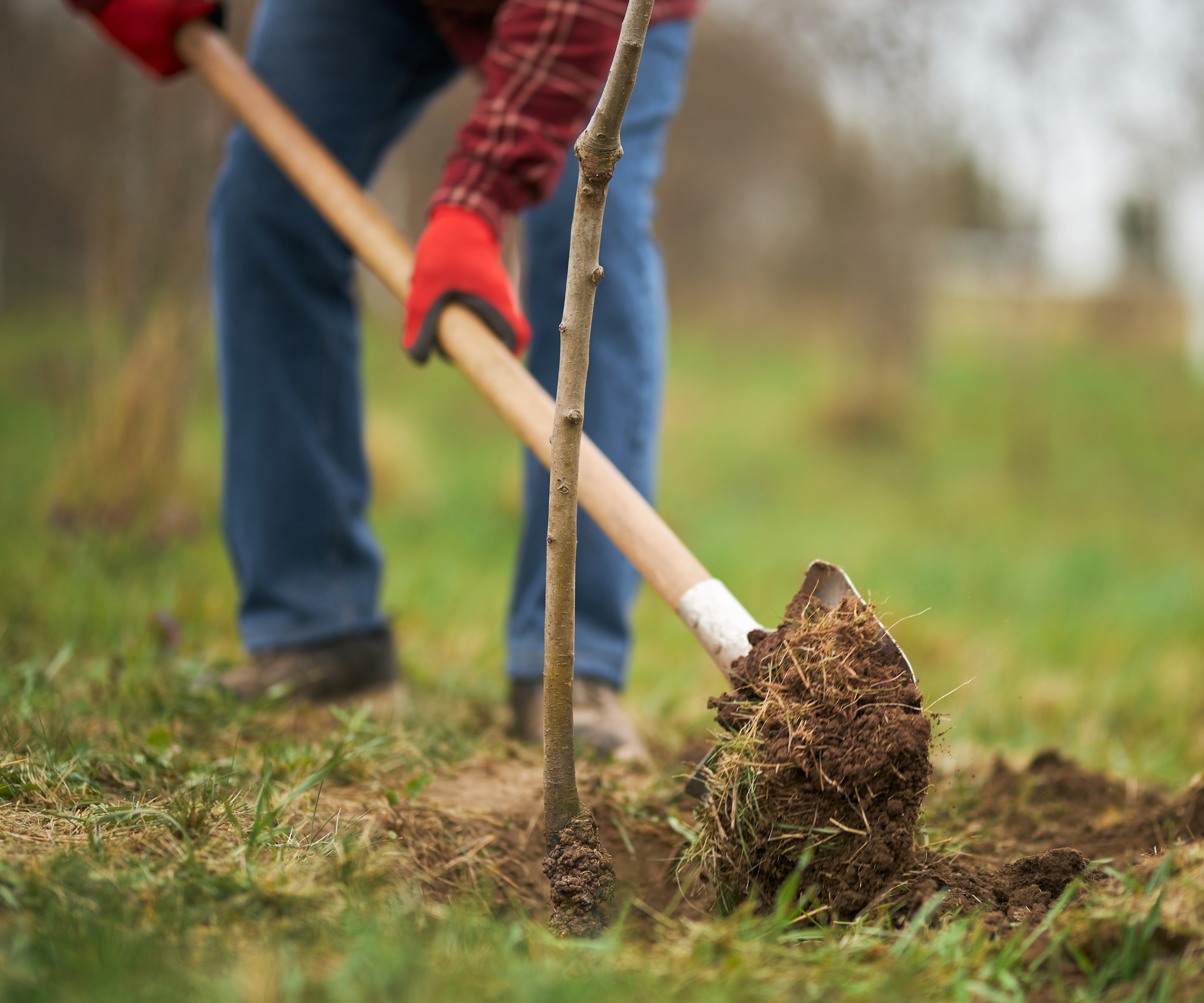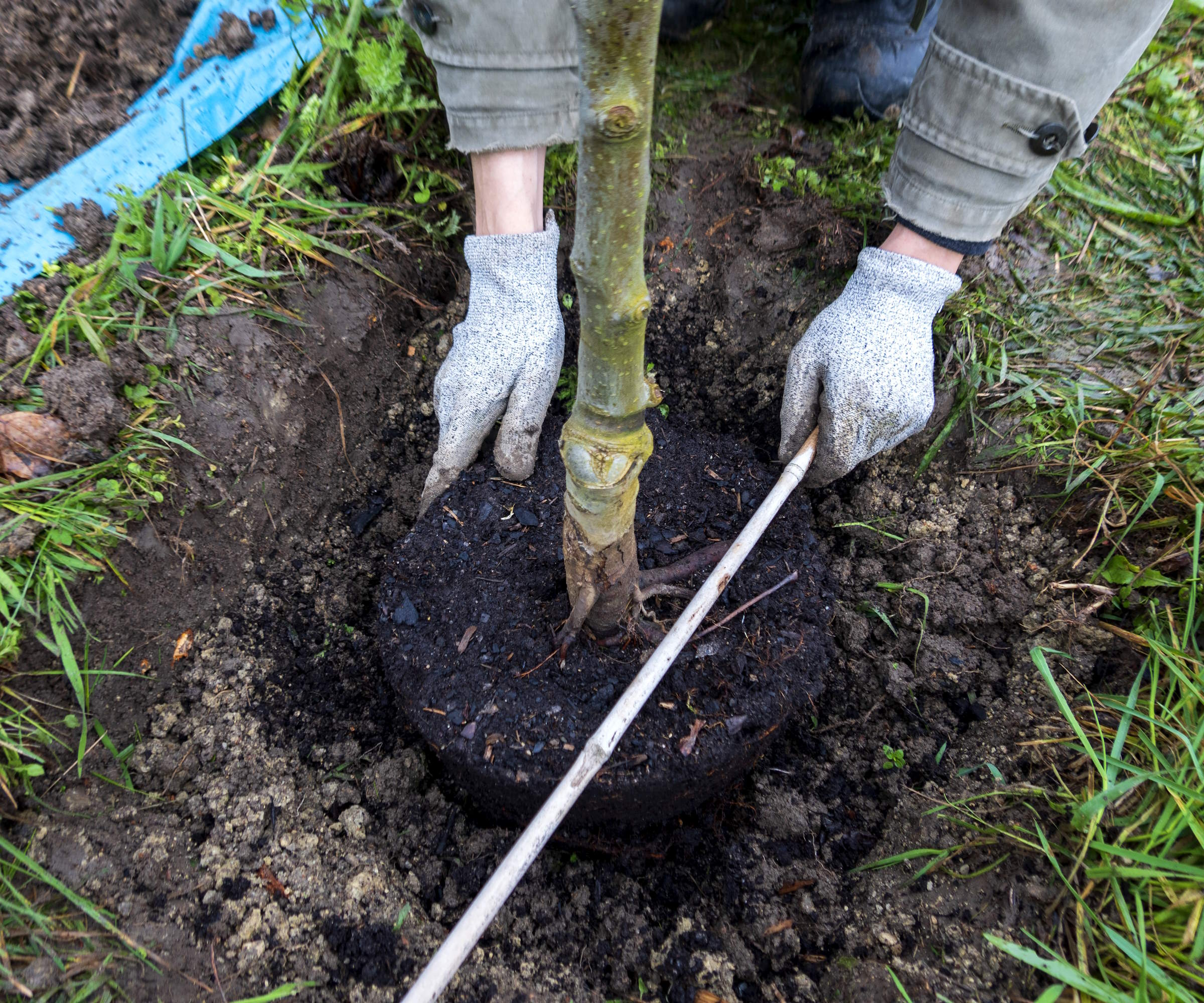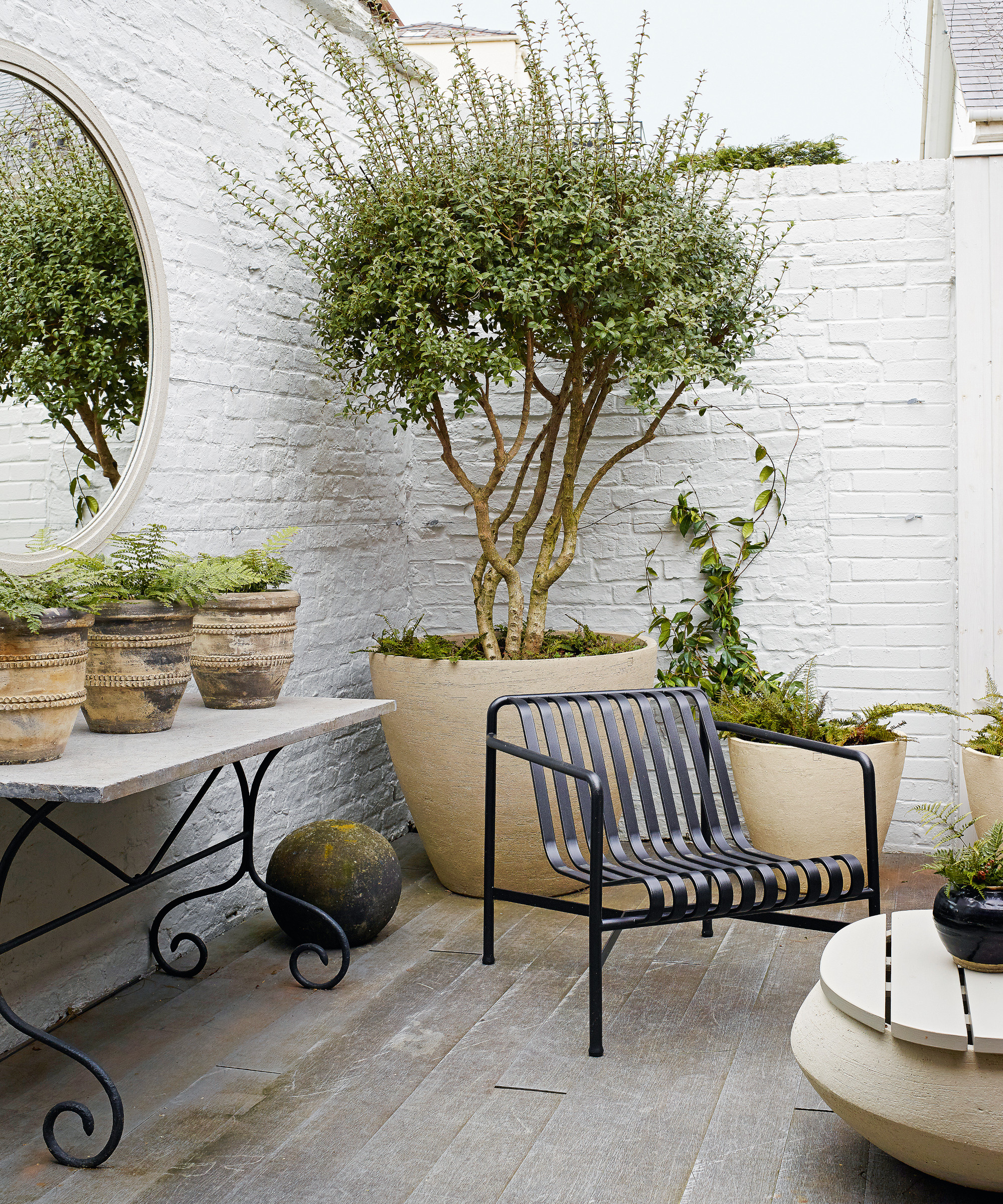When to plant trees – why getting the timing right means healthy trees and less labor
Discover when to plant a tree in the ground or a container, and what times of year to avoid


Trees are a fantastic addition to any backyard. Whether they are added for blossom, flowers, or fruit; to be a statement ornamental feature or as part of a boundary for privacy, there is a tree out there for any want and desire.
If you are adding trees to your backyard ideas, then planting it at the right time is vitally important. Getting the timing right can help give your tree a good start to life in its new home, so it can quickly establish and grow healthily.
Knowing when and how to plant trees also prevents you from potentially having to labor carrying lots of heavy watering cans, or juggling with hoses, to ensure that your precious tree stays alive during hot weather.

Planning when to plant trees helps them develop a strong root system
Planting trees: The type of tree impacts when to plant
Trees purchased from a nursery, garden center, or online, are likely to come either bare-root, root-balled, or container-grown, and that will have an impact on when you plant the trees.
Trees grown in containers are likely to be larger and more expensive, and they tend to be available year-round. Bare root trees are the cheapest option and are available in fall and winter. You can also get trees that are root-balled - where the trees have been grown in the ground and lifted - and these tend to be readily seen from fall through to spring.
When is the best time to plant trees in the ground?

Trees can come grown in containers ready to be put into the ground
The ideal time to plant fruit trees and ornamental trees will depend on the climate in your US hardiness zone. It will impact when, and how severe, the frosts are in your area and also when the ground is workable. It would be a tree planting mistake to consider trying to plant your specimen when the ground is too frozen to break through with a spade.
Your soil type, as well as the local weather conditions, will also have an impact on what the ideal window is. If you have a heavy soil that holds a lot of water, then it would not be recommended to plant a tree after a period of heavy rainfall. Planting into a waterlogged spot will be of no benefit to the tree. Consider digging a test hole to see if it fills up with water - if there is water that pools at the bottom of the hole, then it is not a good time to plant the tree.
Design expertise in your inbox – from inspiring decorating ideas and beautiful celebrity homes to practical gardening advice and shopping round-ups.
Whether they are deciduous or evergreen trees, fall and spring are the two best times of year for planting bare root trees and root-balled trees. They are periods when the soil and weather is ideal for the tree to establish a root network quickly. And spring and fall also benefit the gardener, in terms of how much you will need to water the plants to help them get established.
‘Spring is great for getting stuff in the ground since we have an entire year before it gets cold again,' says Tamara Hogan, plant expert at Fast Growing Trees. ‘Fall is a great time to plant since we know that it’s after the heat wave. We are also getting cooler nights with warm soil temperatures. That is a great set up for new plants to push out roots, which is the first thing new plants are needing to produce while establishing.’
If you live in a warmer climate, then the fall window for planting can be extended into winter. Lisa Tadewaldt is the founder at Urban Forest Pro in Portland, Oregon, and she says: ‘Where I live it is November or December that is best, as we generally get little to no freezing temperatures.' However, she advises that people in colder climates are best waiting until after their last frost, when the ground becomes workable.
When is the best time to plant trees in containers?

While container-grown trees can be sourced year-round, it is still best to plant them in the spring or fall windows too. Planting them during the summer can mean a big task to keep them regularly watered at the levels required to ensure they establish without any issues.
When the temperatures rise, newly-planted trees are going to need a lot of watering to keep their roots hydrated enough. Really warm summers will make knowing when to water plants especially important.
Tamara Hogan adds that even trees planted in spring will need to be closely monitored for watering. ‘Make sure that you are taking summer into consideration,’ she recommends. ‘If your summer kicks off hot and fast, make sure you are watering adequately since new plants will need that support throughout the hot months.’
If you are growing trees in pots, they are also best planted during fall and spring. They are highly vulnerable to drying out in the summer and watering plants in containers will always be more urgent when the trees are newly-planted - the soil should not be allowed to dry out. Planting them in fall and spring protects the new trees for extreme temperatures and heat and it should be less labor-intensive to keep them sufficiently hydrated.

Tamara Hogan graduated from Utah State University with a degree in Ornamental Horticulture and an emphasis in Greenhouse Management. She worked within various horticulture fields before joining Fast Growing Trees.

Lisa Tadewaldt is the founder and owner of Urban Forest Professionals, an arborist company out of Portland, OR, that has been serving that community for over 15 years
FAQs
What month is best to plant a new tree?
The best months to plant a tree tend to be either September or October, or February to March. This is all dependent on your climate, but those months highlighted in fall and spring provide the ideal conditions for planting trees.
Can you plant trees in fall?
Fall is an ideal time to plant trees, as the soil is still warm from summer and the temperatures are starting to fall from their peak months. There is also likely to be regular rain to keep the trees hydrated and, depending on your location, there should be a good time period for the tree to establish a strong root network before the cold weather and frosts of winter arrive.
When you plant trees, mulching around them brings several benefits. Not only can spreading a thick layer of compost, well-rotted manure, woodchip, leaf mold, or bark help retain moisture in the soil - making it readily available for the roots - but it will also suppress competition from weeds and supply nutrients to the young tree as it decomposes.

Drew has worked as a writer since 2008 and was also a professional gardener for many years. As a trained horticulturist, he worked in prestigious historic gardens, including Hanbury Hall and the world-famous Hidcote Manor Garden. He also spent time as a specialist kitchen gardener at Soho Farmhouse and Netherby Hall, where he grew vegetables, fruit, herbs, and cut flowers for restaurants. Drew has written for numerous print and online publications and is an allotment holder and garden blogger. He is shortlisted for the Digital Gardening Writer of the Year at the 2025 Garden Media Guild Awards.
